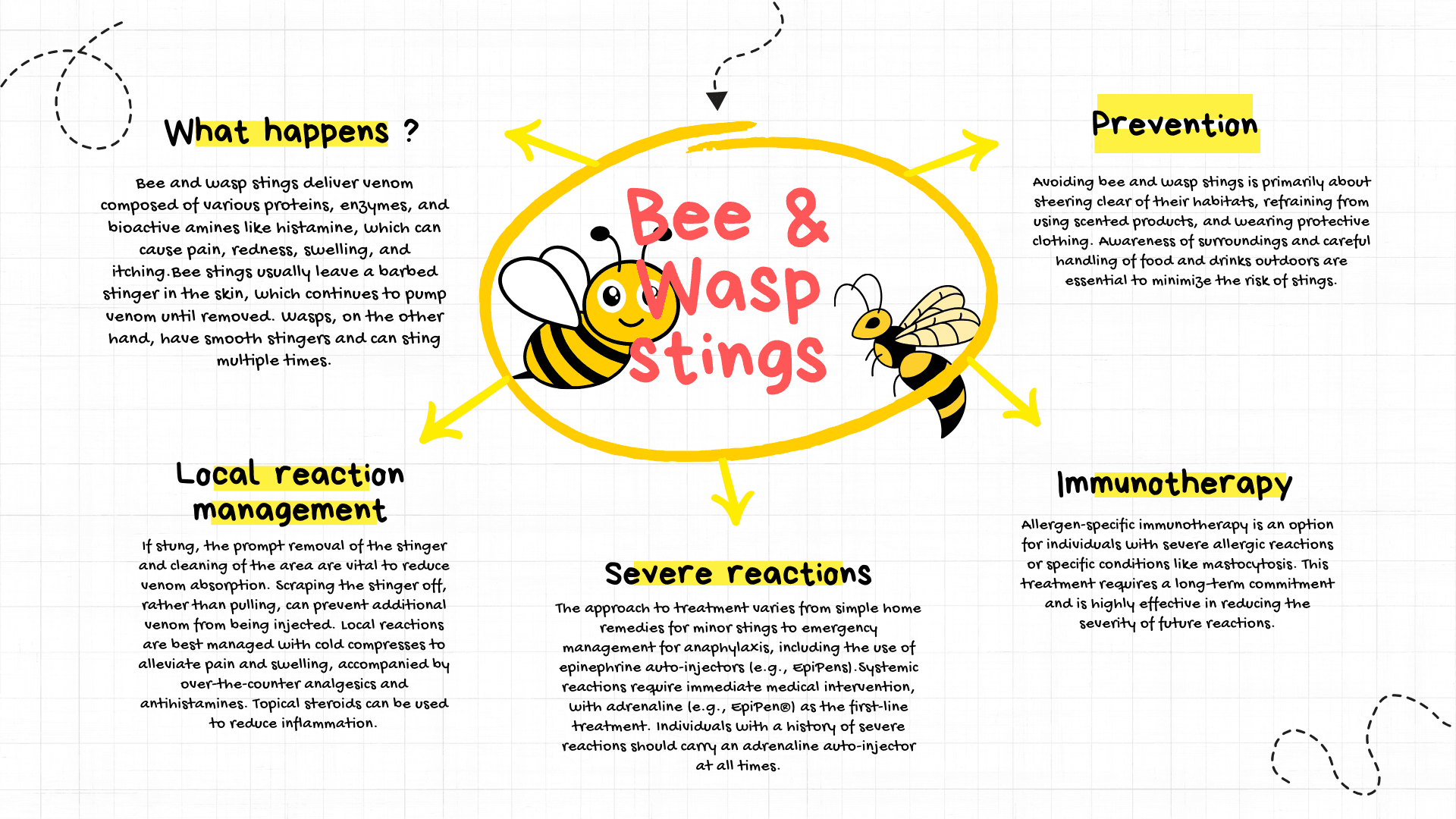Download A4Medicine Mobile App
Empower Your RCGP AKT Journey: Master the MCQs with Us!

Bee and wasp stings are common incidents that can lead to a range of reactions, from mild localized discomfort to severe allergic responses such as anaphylaxis. Understanding the distinction between bee and wasp stings, recognizing the signs and symptoms of a reaction, and knowing the immediate steps to take can significantly impact patient outcomes. This topic covers the epidemiology, clinical manifestations, management strategies, and preventative measures for bee and wasp stings, providing essential knowledge for clinicians to effectively treat and advise patients who have experienced these types of stings.
| Section | Subsection | Details | Notes |
|---|---|---|---|
| Epidemiology | Prevalence | Systemic reactions in adults: 0.3–8.9%, higher in beekeepers. Anaphylaxis: 50% in adults, 20% in children. | Indicates the likelihood of severe allergic reactions among the general population and highlights increased risk for specific groups, like beekeepers. |
| Insect Description | Bees | Honeybees sting once, causing local pain and systemic reactions due to allergens like mellitin and hyaluronidase. | |
| Wasps | Wasps can sting multiple times and contain major allergens such as antigen 5 and hyaluronidases. | Wasp stings can be more dangerous due to the potential for multiple stings and the presence of potent allergens. | |
| Clinical Presentation | Immediate Reaction | Sharp pain, redness, swelling, and embedded stinger (bees only). | Outlines the... |
Try our Free Plan to get the full article.